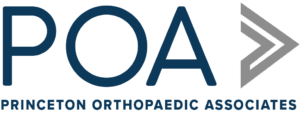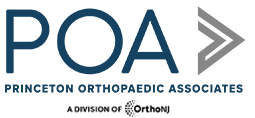
Book An Appointment
Physician Assistants
Physical & Occupational Therapists
KneeMRI ScansNon-OperativePhysiatry
Physical Therapy
Podiatry
Spine
Sports Medicine
TraumaUrgent Care
X-Ray Imaging

Patients experiencing painful, bent toes may have a condition called a hammertoe. It’s a condition often caused by wearing badly-fitting shoes or shoes that don’t allow proper space for the toes. Trauma and lack of proper muscle balance can also be factors. In many cases, conservative treatments can relieve a hammertoe, but in severe cases, surgery may be needed.
Here are a few facts about hammertoes and how to treat them.
A hammertoe is a foot deformity that is caused by an imbalance in the tendons, ligaments, and muscles that keep your toe straight. Tight footwear, an abnormal foot structure, foot trauma, or certain diseases can cause hammertoe.
A hammertoe is when the middle joint of the toe bends into an abnormal and painful position. It’s most common in the three middle toes. Certain factors can increase the risk of developing hammertoe, including toe length, diseases such as arthritis or diabetes, sex (it’s more common in women), and age, because the older you get, the greater the risk of developing hammertoe.
One way to prevent hammertoe is to make certain you wear comfortable footwear with plenty of room for your toes. Shoes with pointed toes tend to squeeze the foot, causing deformities. It’s the main reason why women tend to get hammertoes more than men because high-heeled shoes tend to have pointed toes.



If the toe is still flexible, it’s possible to treat hammertoe without surgery. Your doctor likely will recommend changing your shoes to more comfortable footwear and wearing orthotics or pads to reposition your toe. This should relieve pain and allow the joint to heal properly.
Your doctor may also recommend exercise to return flexibility to the toe. These exercises are meant to stretch the ligaments and tendons in the toe and strengthen the muscles, allowing the toe to return to its proper position. Exercises could include picking up objects with your toes and curling and uncurling them.
If conventional methods don’t work, surgery may be needed. The surgeon can do what’s called a tendon transfer, where he moves the tendon from the bottom to the top of the toe to allow more flexibility.
Another procedure is a joint resection. The surgeon cuts the tendon and ligament at the top of the toe to allow it to flatten out, and the end of the bone is cut off to make the toe easier to move.
The third procedure is a joint fusion. The tendon and ligament are cut to flatten the toe, and the two bones in the toe are screwed together so that they fuse into one bone, keeping the toe flat.
Hammertoe surgery is usually done on an outpatient basis, so you can go home the same day. Depending on the type of surgery and the severity of the hammertoe, recovery can take anywhere from six weeks for the transfer to three months with fusion.
Diagnosing hammertoe will require visiting a doctor or surgeon. At Princeton Orthopaedic Associates, we have a team of experts who know how best to treat your hammertoe. If you suspect you have that issue, we may be able to help. Contact us today for more information.
